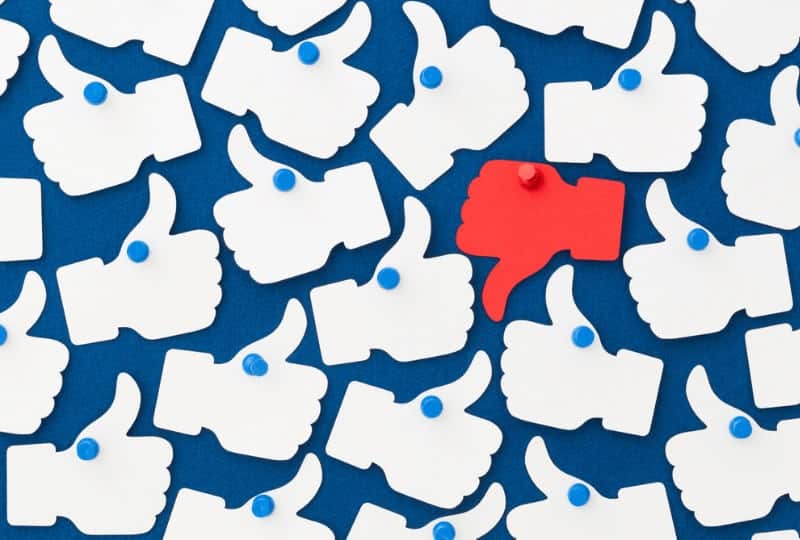Social Media Blunders And How to Avoid Them

Marketing on social media is undeniably a good way to reach a large, well-targeted audience. The problem is that social media is a fast-paced world — you feel obligated to respond quickly to any major trending topic or news story, so you don’t always have time to fully check everything you post.
Add to that the fact that a social media slip-up can spread like wildfire, and companies have to walk a pretty thin line on social media — edgy and current enough to stay in the conversation, without making anyone angry.
Unfortunately, not everyone can toe that line all the time. Here are a few of the highest-profile social media mistakes and what you can learn from them.
Snapchat Gets Caught Using A Support Bot
In July of 2018, Snapchat users started noticing their streaks disappearing, so they took to Twitter to complain. Snapchat, overwhelmed by the numbers and in an effort to respond quickly, responded to tweets by telling users to go to a particular service landing page.
What some users started to notice is that no matter what they tweeted at Snapchat, they’d get the same response — even if it didn’t make sense. Savvy internet users quickly discovered that any tweet directed at Snapchat Support that included the words “lost” and “streak” would get the same response.
Some users saw the bot as an opportunity for humor, tweeting things like “England have lost their World Cup streak” and “I lost my cat when he streaked out my door.” But others were upset.
The Lesson
The lesson here is that when customers have a problem, they want to be taken seriously. If Snapchat had simply had someone copying and pasting the message in response to complaints, they might have gotten away with it. The problem was when customers unsuccessfully tried the solution posted on the site and complained again, only to be met with the same faceless response.
If something goes wrong with your product, make an announcement that you’re working on it and try to deal with the worst of the complaints, but know that you’re not going to have the means to make a personalized response to thousands of people. Bridging that gap with a robot isn’t the way to go.
Miele Misses The Mark
On International Women’s Day, Miele wanted to celebrate women and “embrace what makes them unique.” Unfortunately, the image they chose to illustrate that sentiment was four women leaning on a washer-dryer set with a stock-photo-white background.
The post was generally seen as tone-deaf, reinforcing stereotypes of women as homemakers first and individuals second. Miele deleted the post a few hours later.
The Lesson
Miele didn’t do anything wrong by trying to get in on the celebrations — what they failed to consider was the optics. Every company wants brand visibility, but in this particular set of circumstances, including imagery of household appliances probably did more harm than good.
If you want to participate in internet trends and holidays, more power to you! But have a few sets of extra eyes take a look at the post before it goes live to avoid impressions like this.
The Starbucks Blonde Espresso
In January of 2019, Starbucks introduced the “blonde” roast — a very light, subtle roast for people who wanted a less intense coffee flavor. The launch was confusing, to say the least.
Firstly, the landing page for Starbucks Blonde contains the following lines:
“Who says espresso has to be intense? We have for 43 years. But we’re Starbucks Coffee Company. So we did the exact opposite.”
This is a baffling inconsistency in branding. Starbucks is essentially saying that they’ve been champions of strong coffee for decades, but now they’ve changed their minds because…well, who knows?
More controversially, the tagline is “blonde breaks rules,” which strikes many as a callback to the regressive hair dye ads that said “blondes have more fun.” People have also pointed out that some customers will now order “a tall blonde,” which is cheeky at best and downright uncomfortable at worst.
The Lesson
Be consistent — when you’re bucking trends, get your messaging in order before you launch something as major as a new product line. If you’ve been talking for years about how coffee should be strong, think through how you’ll present it when you decide it shouldn’t be any more. Maybe something like “Who says espresso has to be intense? We have for 43 years. And we were wrong.”
Social media is a constantly moving target, and no one gets it right every time. But taking the time to be slightly more considerate and careful with your social media work will help you avoid the pitfalls that so many other companies have encountered.





